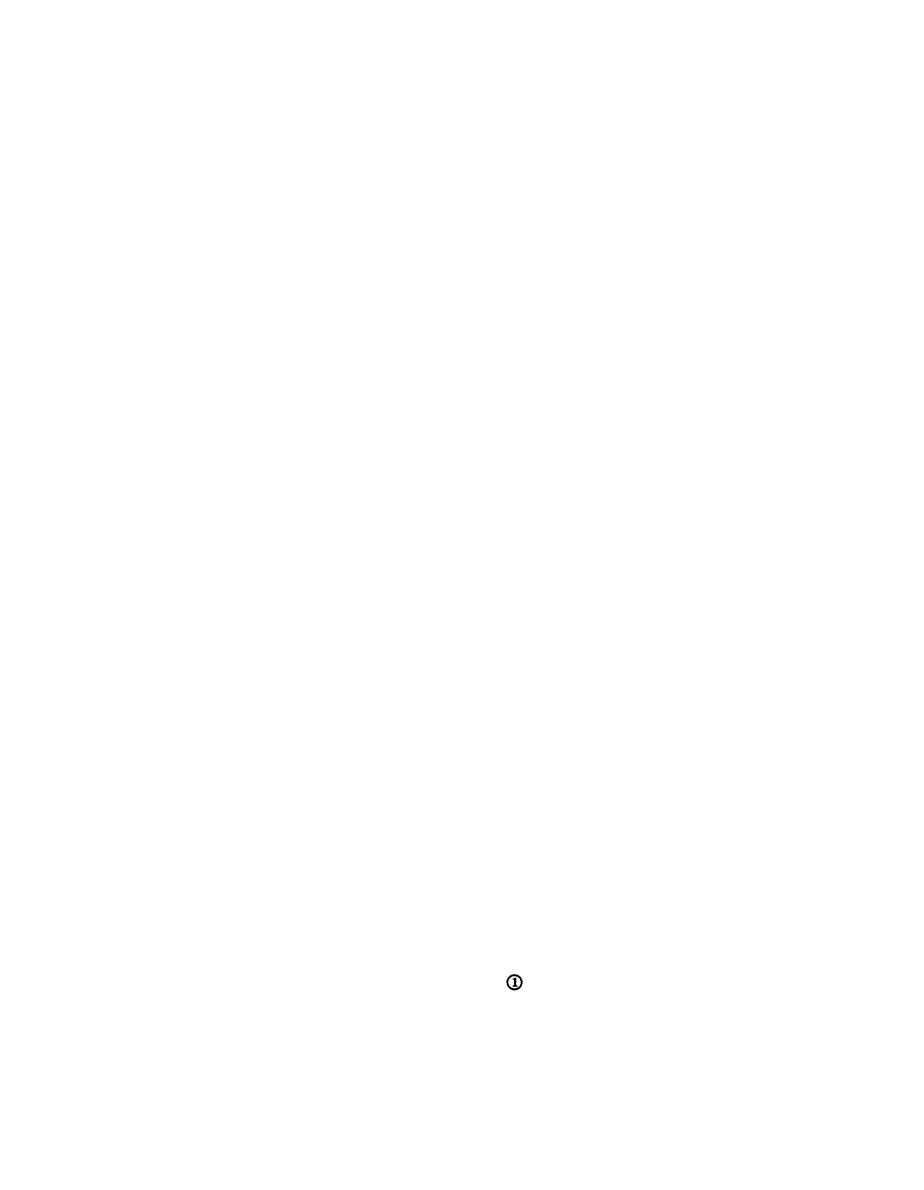 |
|||
|
|
|||
|
|
|||
| ||||||||||
|
|
 TM 11-5895-1012-10
not included in the following list. A description of each
date a wide range of data rates to produce a single
circuit follows in the paragraph indicated.
serial stream of information, with its associated tim-
(1) Two-wire voice user with 20 Hertz signalling
ing.
j. Pulse Code Modulation Equipment (PCM). The
(para c below).
(2) Two-wire voice user with loop signalling (para
pulse axle modulation equipment normally accepts the
d below).
analog signal (the modulating signal) and samples it at
(3) Two-wire voice user with E&M signalling (para
a predetermined rate. The sample is then quantized
e below).
and coded so that each element of information consists
(4) Two-wire voice user with standard integral sig-
of differing numbers of pulses (marks and spaces).
This equipment generally uses an eight bit sample
nalling (para f below).
(6) Four-wire user with standard integral signal-
rate.
k. Modems.
ling (para g below).
(6) Four-wire user with 20 Hertz signalling (para h
(1) Digital Modems (VF). This is a modem which is
below).
used to convert direct current signals appearing on the
(7) Four-wire user with loop signalling (para i be-
digital patch bay to the analog form for appearance on
low).
the equal level patch bay. This equipment requires a
(8) Four-wire data user cable to TCF (para j be-
nominal bandwidth of 4 kHz
low).
(2) Special Digital Modems (Group). Input to this
(9) Two-wire or four-wire voice user using non-
modem is in digital form from the digital patch bay.
standard in-band signalling (nonstandard signalling
Its output is analog form and appears on the group
unit at user terminal) (para k below).
patch bay in the standard frequency division multi-
(10) Four-wire user with DX signalling (para l be-
low).
(3) Special Modem (Supergroup). Input to this mo-
dem is in digital form from the wideband user/switch
(11) Four-wire PBX trunk to AUTOVON (PBX
cable to TCF) (para m below).
or TDM. Its output in analog form appears on the su-
pergroup portion of the coaxial patch bay in the stand-
(12) Four-wire data user with DX signalling (para
ard FDM supergroup frequency bandwidth of 312 to
n below).
(13) Two-wire PBX cable access line (two to four
552 kHz.
wire conversion at PBX) to local AUTOVON switch
2-17. Voice Frequency Circuits
(para o below).
a. General. All voice frequency (vf) users including
(14) Four-wire AUTOVON subscriber telephone
AUTOVON, AUTODIN, and AUTOSEVOCOM
cable to TCF (loop resistance less than 700 ohms) (para
switches, communications centers, PABX's, local
p below).
switchboards and tactical multiplex equipment access
(15) Four-wire AUTOVON circuit (remote two-
the TCF by way of the Primary Patch Bay. Four-wire
wire PBX subscribers) (para q below).
fixed station multiplex equipment utilizing 2600
(16) Four-wire AUTOVON special grade circuits
Hertz signaling access the TCF by way of the Equal
(AUTOVON subscribers (data) and inter-switch
Level Patch Bay. All conditioning and signalling
trunks) (para r below).
equipment required to achieve compatibility between
(17) Four-wire AUTOVON voice grade circuits
users and the transmission media is electrically con-
(para s below).
nected between the Equal Level Patch Bay and the Pri-
(18) Voice and telegraph users connected to High
mary Patch Bay. The Primary Patch Bay terminates 2,
Frequency radio transmission media (pars t below).
4, 6, or 8 wire user circuits. The Equal Level Patch Bay
(19) Four-wire voice frequency carrier telegraph
serves at the principal point of interface and restora-
(para u below).
tion in the Technical Control Facility. Circuits appear-
(20) Fixed station multiplex interconnection (para
ing at the Equal Level Patch Bay appear as 4-wire bal-
v below).
anced pair circuits (AUTOVON switch circuits having
(21) Non-DCS multiplexer user to DCS user on
Pilot Make Busy capability appear as five-wire cir-
base, or using DCS transmission media (para w below).
cuits). The Equal Level Patch Bay is the zero (0) test
(22) Four-wire entrance toll cable (para x below).
level point in the station, that is, OdBr send and re-
(23) Four-wire connections to High Frequency ra-
ceive. DCS standard supervisory signals appear as
dio systems (para y below).
2600 Hertz tones at the Equal Level Patch Bay.
c. Two- Wire Voice User With 20 Hertz Signalling
b. Circuit Descriptions. The following is a list of the
(fig. 2-8
). The users for this circuit are either a
various types of voice frequency circuits which may be
two-wire switchboard or an individual two-wire user
commonly found appearing in the Technical Control
using 20 Hertz ringing source. This circuit provides
Facility. A TCF may service other circuits which are
echo suppression and control in order to minimize
|
|
Privacy Statement - Press Release - Copyright Information. - Contact Us |